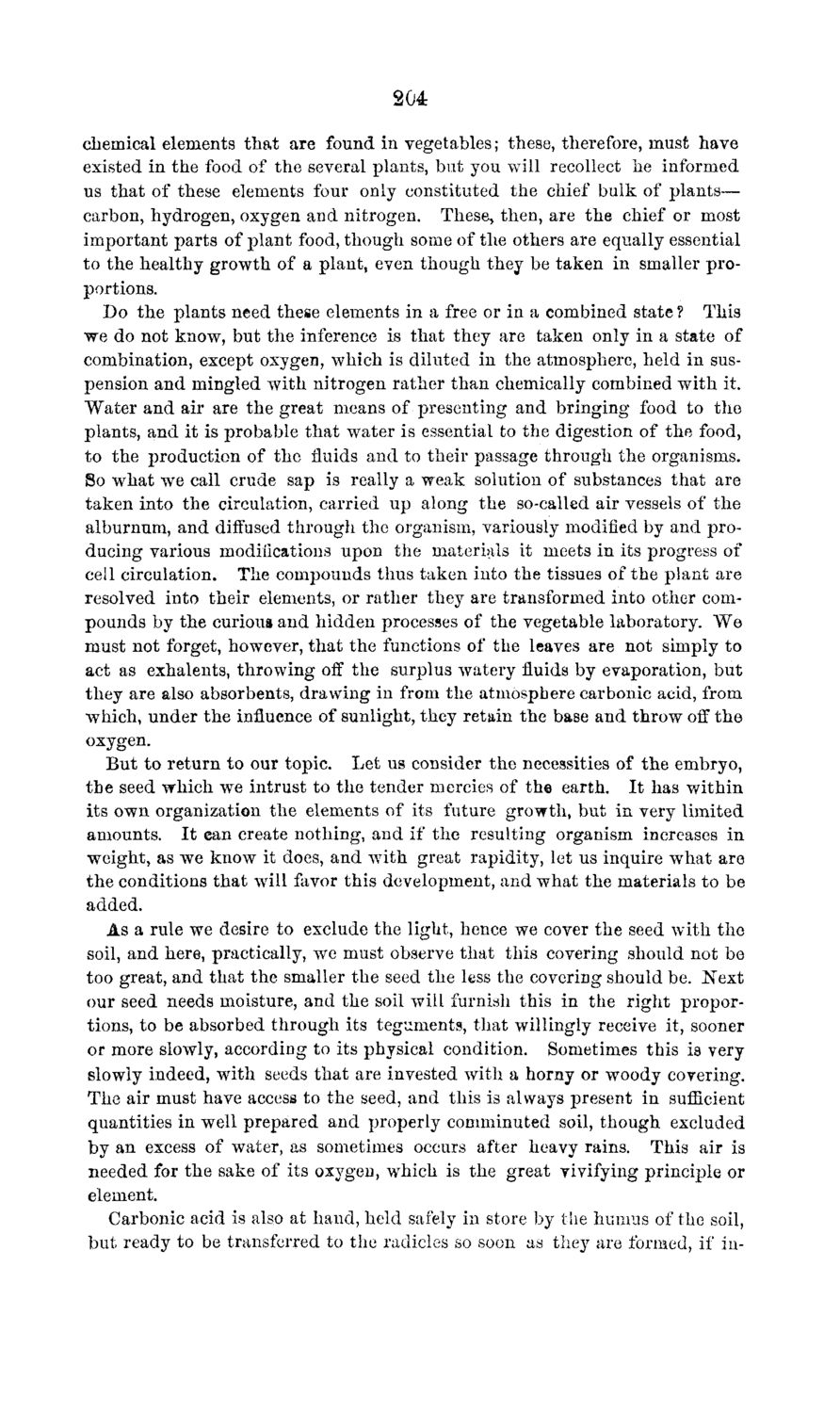| |
| |
Caption: Board of Trustees Minutes - 1869
This is a reduced-resolution page image for fast online browsing.

EXTRACTED TEXT FROM PAGE:
204 chemical elements t h a t are found in vegetables; these, therefore, must have existed in the food of the several plants, but you will recollect he informed us that of these elements four only constituted the chief bulk of plants— carbon, hydrogen, oxygen and nitrogen. These, then, are the chief or most important parts of plant food, though some of the others are equally essential to the healthy growth of a plant, even though they be taken in smaller proportions. Do the plants need these elements in a free or in a combined state ? This we do not know, but the inference is that they are taken only in a state of combination, except oxygen, which is diluted in the atmosphere, held in suspension and mingled with nitrogen rather than chemically combined with it. Water and air are the great means of presenting and bringing food to t h e plants, and it is probable that water is essential to the digestion of the food, to the production of the fluids and to their passage through the organisms. So what we call crude sap is really a weak solution of substances that are taken into the circulation, carried up along the so-called air vessels of the alburnum, and diffused through the organism, variously modified by and producing various modifications upon the materials it meets in its progress of cell circulation. The compounds thus taken into the tissues of the plant are resolved into their elements, or rather they are transformed into other compounds by the curious and hidden processes of the vegetable laboratory. W e must not forget, however, that the functions of the leaves are not simply to act as exhalents, throwing off the surplus watery fluids by evaporation, but they are also absorbents, drawing in from the atmosphere carbonic acid, from which, under the influence of sunlight, they retain the base and throw off t h e oxygen. But to return to our topic. Let us consider the necessities of the embryo, the seed which we intrust to the tender mercies of the earth. It has within its own organization the elements of its future growth, but in very limited amounts. I t ean create nothing, and if the resulting organism increases in weight, as we know it does, and with great rapidity, let us inquire w h a t are the conditions that will favor this development, and what the materials to be added. As a rule we desire to exclude the light, hence we cover the seed with the soil, and here, practically, we must observe that this covering should not be too great, and that the smaller the seed the less the covering should be. Next our seed needs moisture, and the soil will furnish this in the right proportions, to be absorbed through its teguments, that willingly receive it, sooner or more slowly, according to its physical condition. Sometimes this is very slowly indeed, with seeds that are invested with a horny or woody covering. The air must have access to the seed, and this is always present in sufficient quantities in well prepared and properly comminuted soil, though excluded by an excess of water, as sometimes occurs after heavy rains. This air is needed for the sake of its oxygen, which is the great vivifying principle or element. Carbonic acid is also at hand, held safely in store by the humus of the soil, but ready to be transferred to the radicles so soon as they are formed, if in-
| |